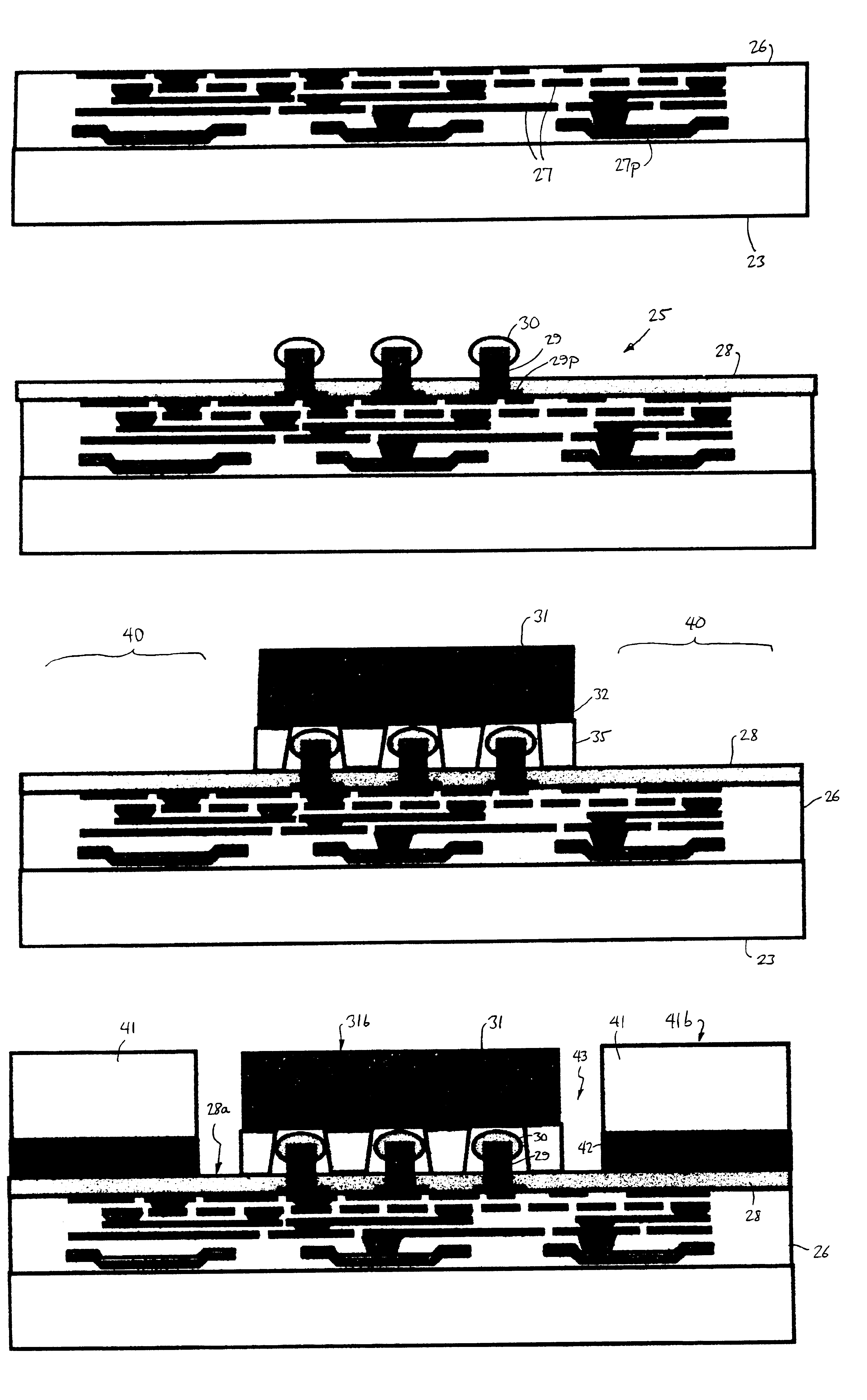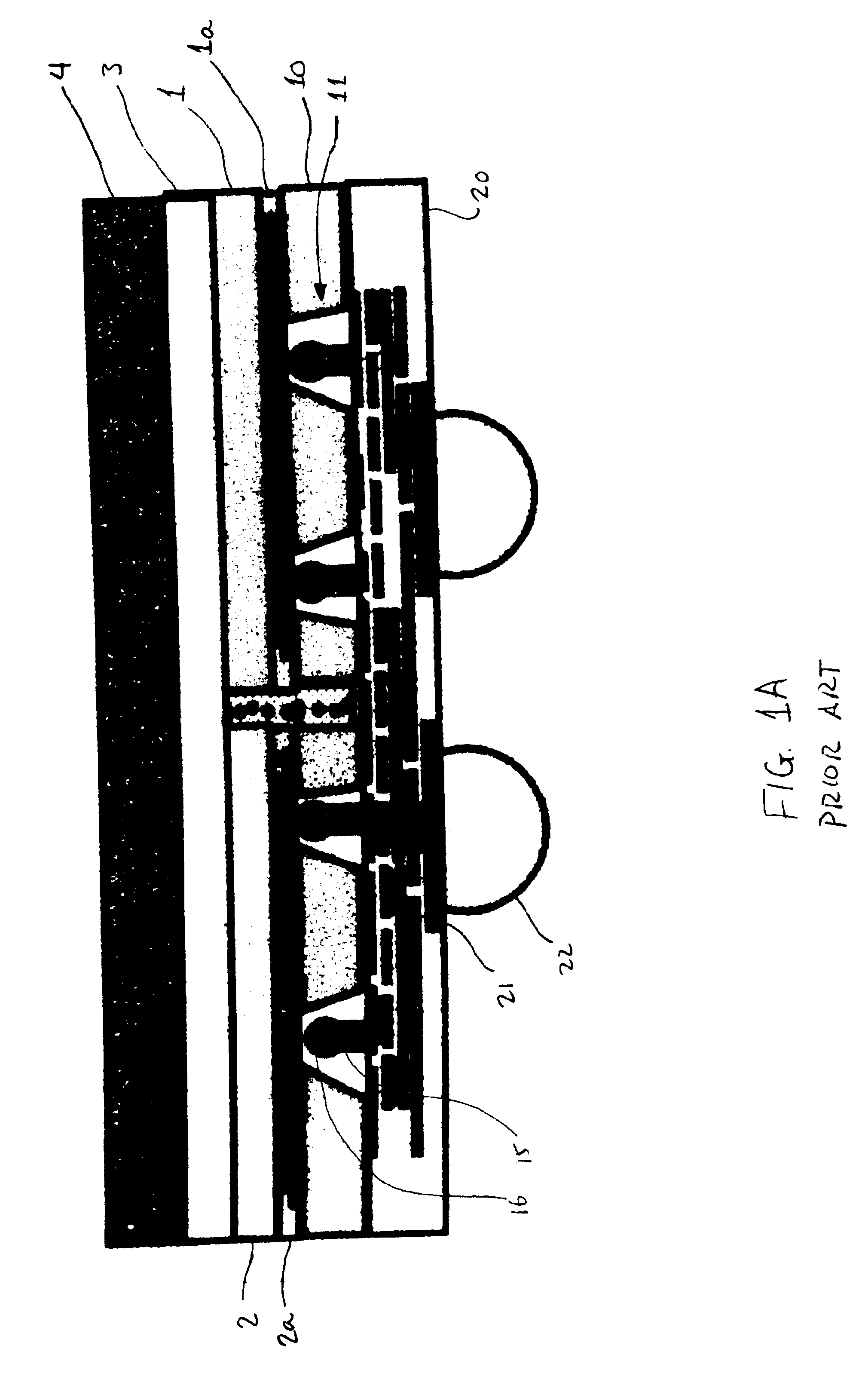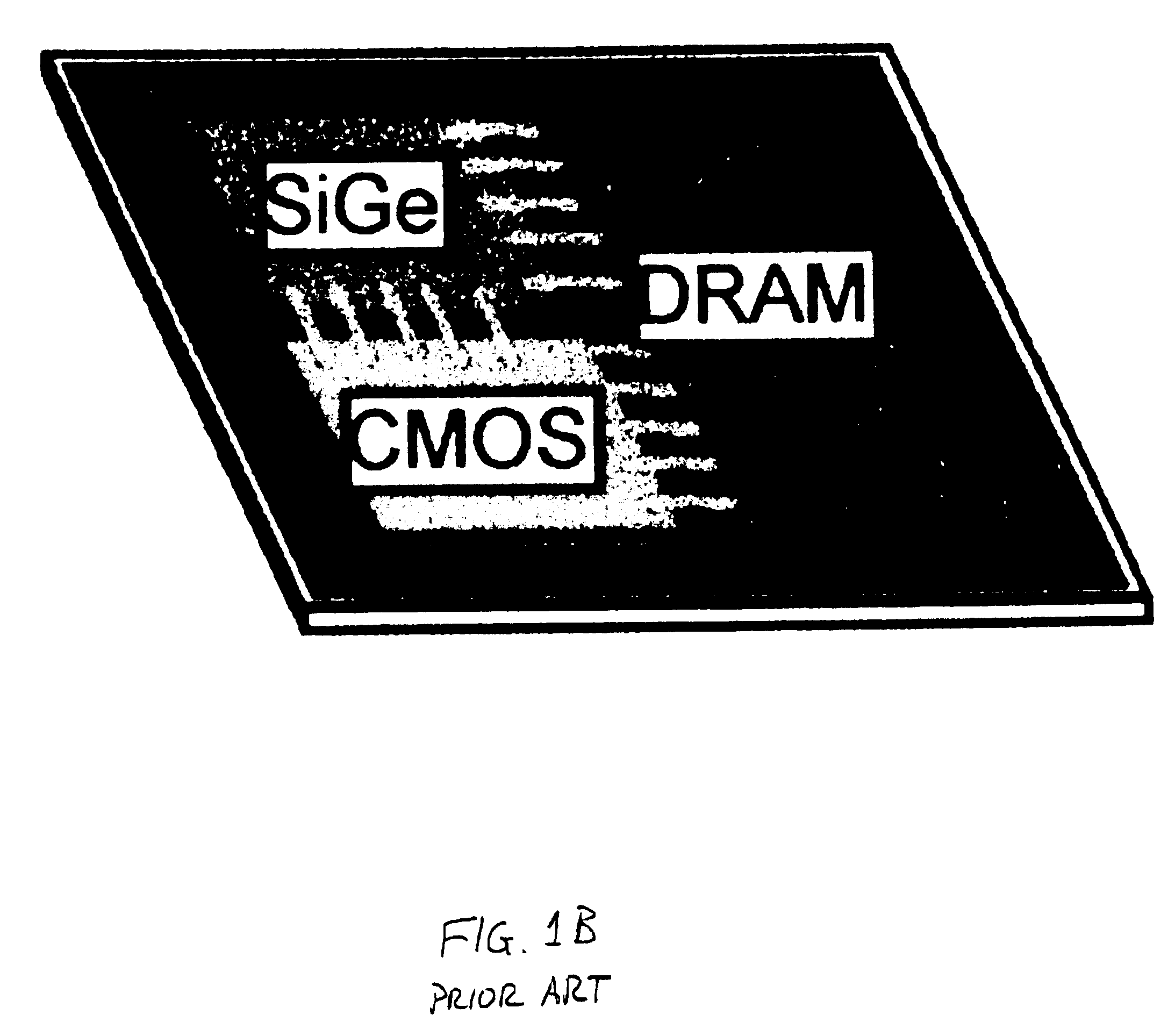Method of fabricating integrated electronic chip with an interconnect device
a technology of interconnecting devices and electronic chips, which is applied in the direction of manufacturing tools, solid-state devices, basic electric elements, etc., can solve the problems of increasing the density of the respective device elements, and increasing the complexity of the device. complexity, which is a special challenge for the device packaging technologis
- Summary
- Abstract
- Description
- Claims
- Application Information
AI Technical Summary
Benefits of technology
Problems solved by technology
Method used
Image
Examples
first embodiment
ing Layer Using Stud / Via Connections
The interconnect wiring 27 (preferably Cu) is embedded in a dielectric layer 26 (typically polyimide or an oxide) on a transparent substrate 23 (see FIG. 2A). Substrate 23 is typically made of glass such as boro-float glass and has a size of 200 mm in diameter, commensurate with wafer sizes used in manufacturing. Although layer 26, including conductors 27, is shown as a single layer, it will be appreciated that for ease of manufacturing it is often designed and fabricated as a multilayer structure. The number of levels of wiring in layer 26 depends on the connection density required to match with the chip connections; typically 3 to 5 metal layers are required. The Cu conductors 27 connect to bonding pads 27p which typically are formed of Ni (but may also be Cu, Au, Co or a combination thereof). The bonding pads 27p have a spacing in accordance with a required spacing of connections to a motherboard. For example, if conductors 27 are to be connect...
second embodiment
ng Layer Using C4 Connections
In this embodiment, the connection between chip 31 and interconnect wiring 27 is realized using conventional C4 connectors. As shown in FIG. 6A, chip 61 has BEOL metal wiring layers embedded in a dielectric layer 62, with the last metal layer connecting to pads 63 on which C4 solder balls 64 are formed. Interconnect wiring 67 (preferably Cu) is embedded in a dielectric layer 66 (typically polyimide or an oxide) on a transparent substrate 68. The interconnect wiring also connects to bonding pads 67p, as in the first embodiment (see FIG. 6B; compare FIG. 2A). A stiffener 41 is prepared with an adhesive layer 42 on the top thereof, then flipped over and joined to layer 66, to form the structure of FIG. 6C. As in the first embodiment, the stiffener has a hole in its center slightly larger than chip 61.
The chip is then joined to the interconnect wiring layer by a conventional C4 chip join process (FIG. 6D). The entire gap between the chip and the stiffener, i...
PUM
| Property | Measurement | Unit |
|---|---|---|
| Expansion enthalpy | aaaaa | aaaaa |
Abstract
Description
Claims
Application Information
 Login to View More
Login to View More - R&D
- Intellectual Property
- Life Sciences
- Materials
- Tech Scout
- Unparalleled Data Quality
- Higher Quality Content
- 60% Fewer Hallucinations
Browse by: Latest US Patents, China's latest patents, Technical Efficacy Thesaurus, Application Domain, Technology Topic, Popular Technical Reports.
© 2025 PatSnap. All rights reserved.Legal|Privacy policy|Modern Slavery Act Transparency Statement|Sitemap|About US| Contact US: help@patsnap.com



